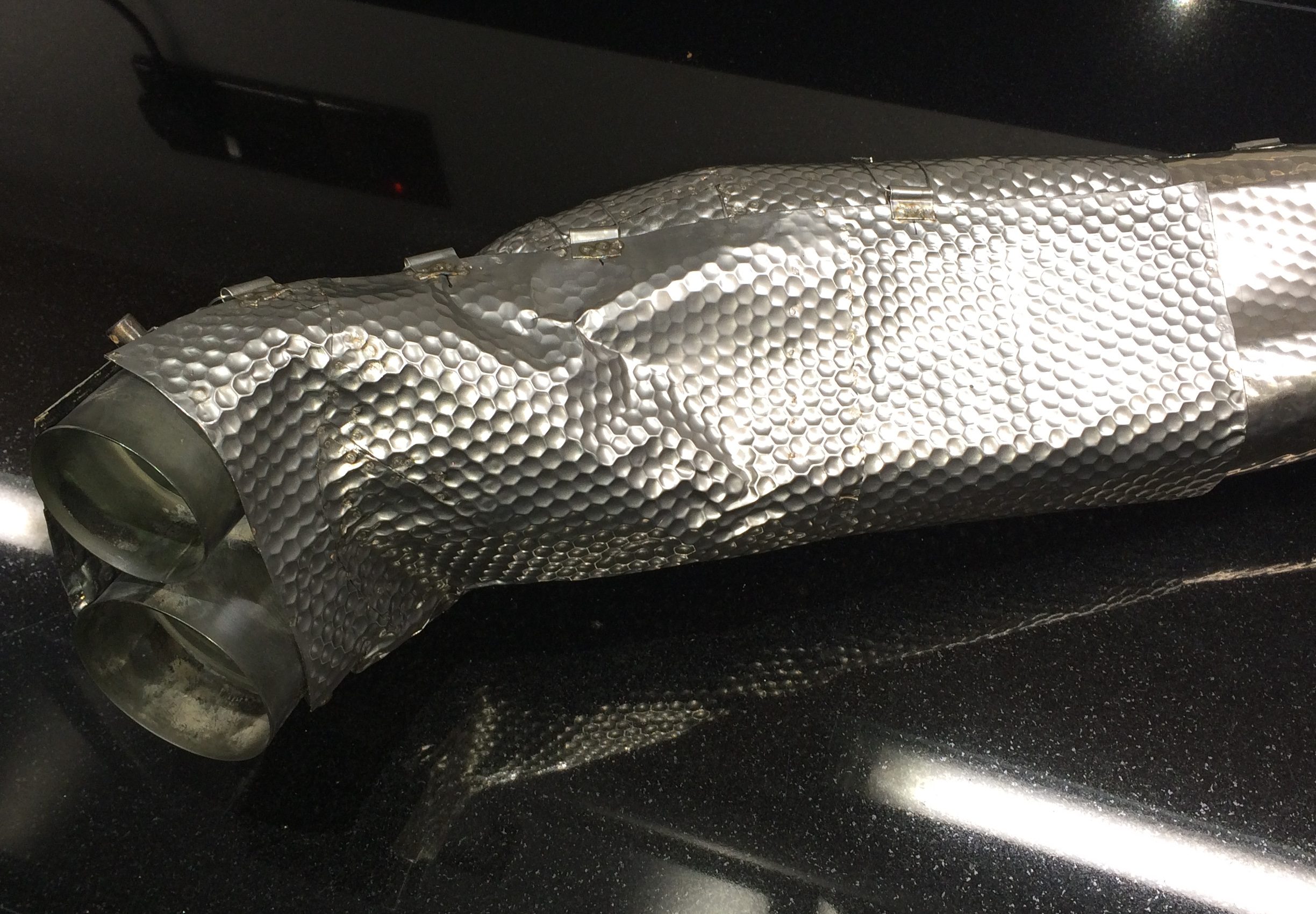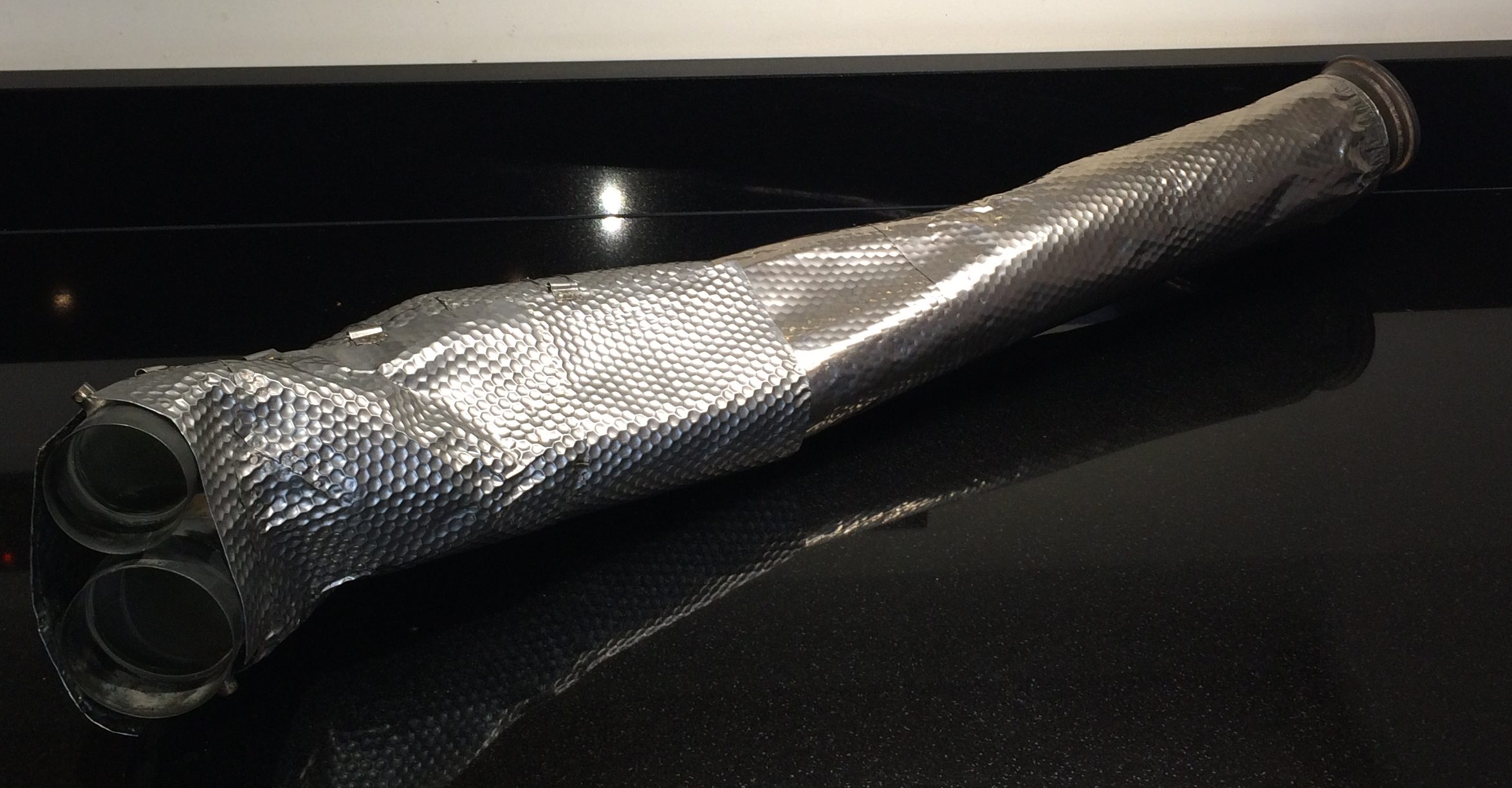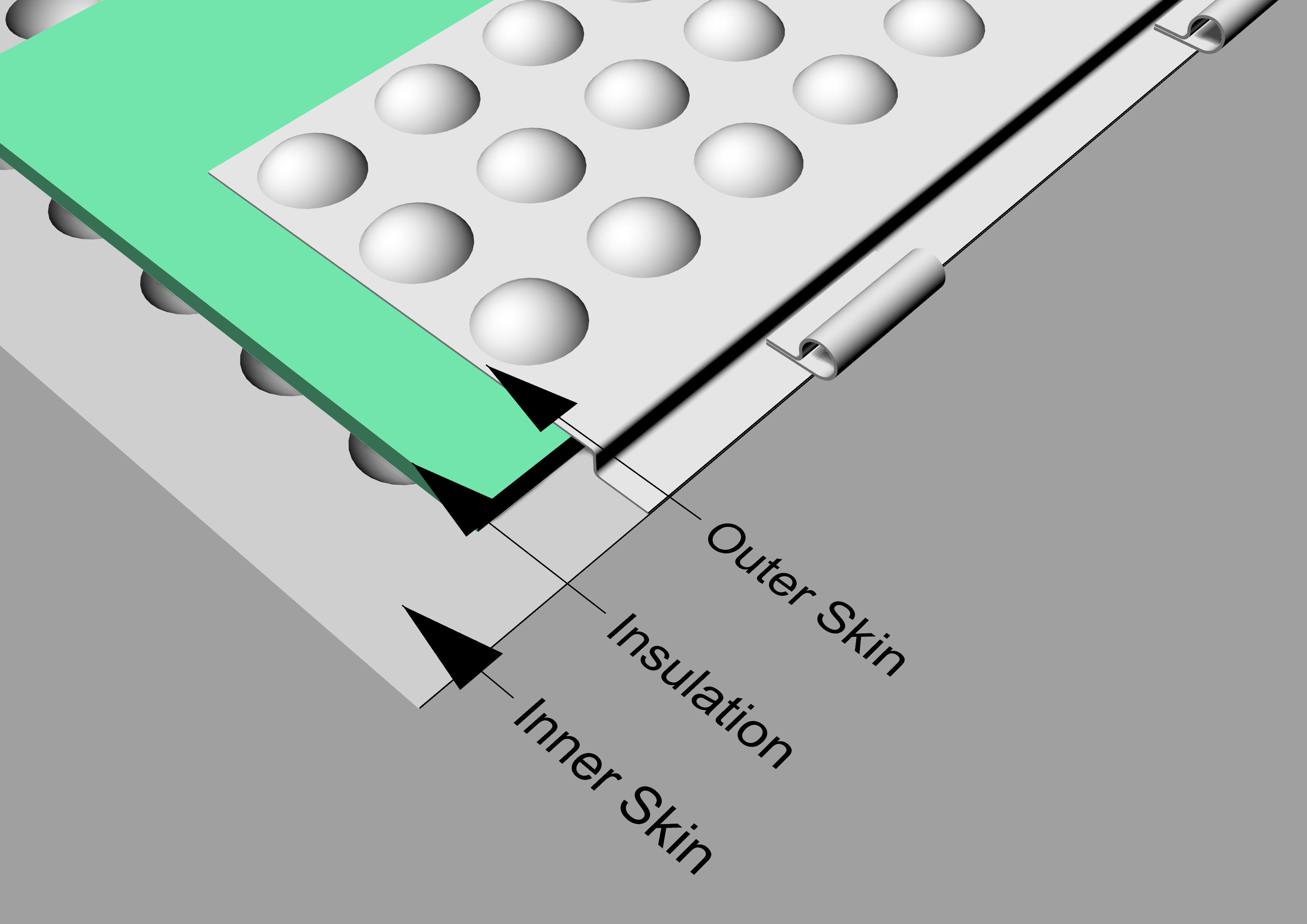 High temperature engine exhaust heat shields – 1000°C
High temperature engine exhaust heat shields – 1000°C
Axes manufactures cost effective, high temperature heat shields for insulation of exhaust components and turbine casings. These lightweight shields are constructed from a sandwich of high temperature mineral insulation between two formed nickel alloy sheets. They are able to withstand contact temperatures in excess of 1000 °C.
The shields are hand made and can be supplied to drawing for simple shapes and straight pipe. For complex shapes , such as those in the photo’s, they are typically formed using a customer exhaust manifold or turbocharger housing, which we will need available for a short period. They can be formed around a 3D model former, typically printed in plastic , which is generally the best solution when shields are ordered on a regular basis.
They are suitable for use on vehicles used in motorsport or in turbocharger and engine test systems. They provide good durability when used in direct contact with pre or post turbine exhaust components operating under the most extreme conditions, such as those found with WRC engines using anti-lag systems.
The shields shown in these photos are fitted to S12 Subaru Impreza WRC exhaust manifolds. These Inconel manifolds operate with typical exhaust gas temperatures of 900°C, regularly increasing to > 1100°C during periods when the anti-lag system is in operation. They will remain in good conditions for many thousands of km of competitive stage mileage.
This type of shield is installed primarily to reduce the radiant heat transfer from the exhaust to the engine bay and its components. They also provid e a secondary safety function as they can withstand direct exposure to exhaust gas and therefore reduce the risk of damage or fire in the event of a crack or hole developing in the exhaust which they surround. Providing there is moderate air flow around the shield , the temperature of the outer skin will remain low thus substantially eliminating radiant heat transfer from the exhaust to other components in proximity to it. When applied to the exhaust manifold prior to the turbocharger they will increase the pre-turbocharger exhaust gas temperature resulting in increased turbine work potential which will give somewhat faster development of boost pressure.
e a secondary safety function as they can withstand direct exposure to exhaust gas and therefore reduce the risk of damage or fire in the event of a crack or hole developing in the exhaust which they surround. Providing there is moderate air flow around the shield , the temperature of the outer skin will remain low thus substantially eliminating radiant heat transfer from the exhaust to other components in proximity to it. When applied to the exhaust manifold prior to the turbocharger they will increase the pre-turbocharger exhaust gas temperature resulting in increased turbine work potential which will give somewhat faster development of boost pressure.
Construction details
The motorsport shields are constructed from 0.15mm thick nickel alloy sheet pre-rolled with a dimple pattern which both diffuses radiant heat and reduces conducted heat from contact with the exhaust. Fixing a shield around the exhaust, or to another shield section, is achieved by the use of wire lock tabs which are shown in the view below. These tabs are formed from multiple layers of the same material used for the skins to minimise corrosion and local stress in the shield. They are welded to the folded and welded joint between the inner and outer skins .

Benefits over conventional technology.
The ductility of the nickel alloy used by Axes , in conjunction with the pre-formed dimples, makes it possible for the shield to closely follow the contour of the exhaust . Where clearance exists these shields are more suitable than the conventional aerospace components which use a stainless steel material. Nickel alloys retain their strength at higher temperatures than conventional stainless steel alloys such as 304 and 316.
Test Cell Multi-layer Shield.
For test cell use where exhaust pipework may be required to pass through test cell walls while operating at high temperature , Axes can provide multilayer shields . Such multilayer shields are able to limit the outer skin temperature under conditions of limited air flow around the shield.
